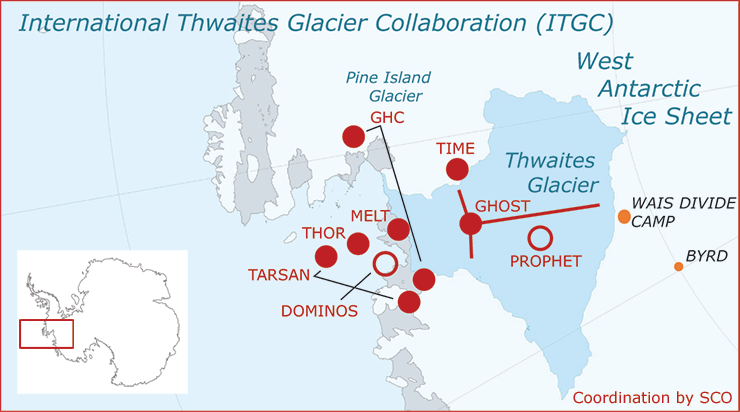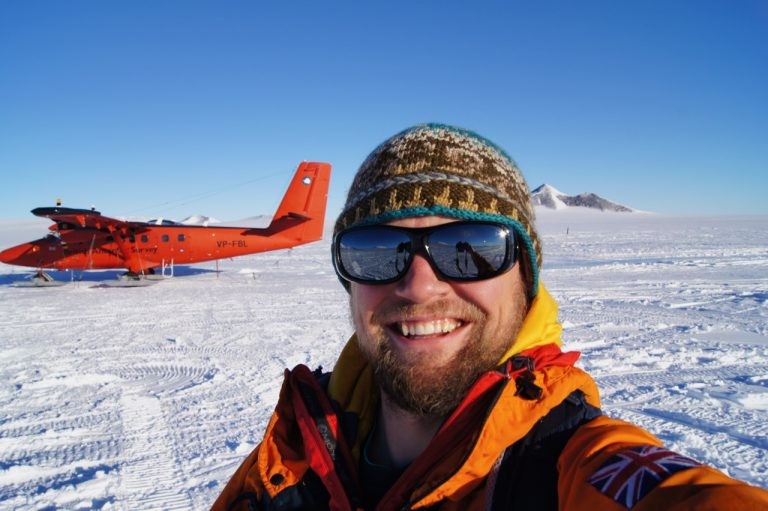The International Thwaites Glacier Collaboration (ITGC)

About
The US National Science Foundation (NSF) and UK Natural Environment Research Council (NERC) are teaming up to study a rapidly changing glacier roughly the same size as Florida or Britain. The NERC and NSF partnership, called the International Thwaites Glacier Collaboration (ITGC), covers research across Thwaites Glacier and its adjacent ocean region; the glacier flows into Pine Island Bay, part of Amundsen Sea. ITGC is the largest joint UK-US project undertaken on the southern continent in 70 years.
Over the past 30 years, the amount of ice flowing out of this 120-kilometer-wide region has nearly doubled. Warm ocean water from the Amundsen Sea comes into contact with the ice at its grounding line, causing it to melt. Melting loosens the ice from the bedrock below, causing it to flow faster and eventually to retreat into the deeper and thicker ice areas where it is likely to speed up still more.
Starting in 2018, and over the next five years, teams of scientists will explore the ocean and marine sediments, measure currents flowing toward the deep ice, and examine the stretching, bending, and grinding of the glacier over the landscape below. The project will involve more than 60 scientists and students.
Source: ITGC

Field Deployment
In the 2018/2019 season, PGG member Dave Porter was the Survey Scientist with the airborne geophysics survey of the Thwaites Glacier region aboard the British Antarctic Survey (BAS) Twin Otter 'FBL'. Geophysical data collected aboard the 14 FBL flights include accumulation radar from CReSIS at the Univ. of Kansas, Reigl scanning lidar, dual-Scintrex magnetometers, and two aerogravity systems: the BAS LaCoste & Rombert (L&R) gravimeter and a LDEO strap-down gravimeter from iMAR.
Aerogravity data are available at BAS, and have been used to develop new models of the seafloor in front of the Thwaites grounding line (Jordan et al., 2020).
Acknowledgements
Federal funding for these activities were provided by the U.S. National Science Foundation and the U.K. Natural Environment Research Council.
Any opinions, findings, and conclusions or recommendations expressed in this material are those of the author(s) and do not necessarily reflect the views of the U.S. National Science Foundation or the U.K. Natural Environment Research Council.